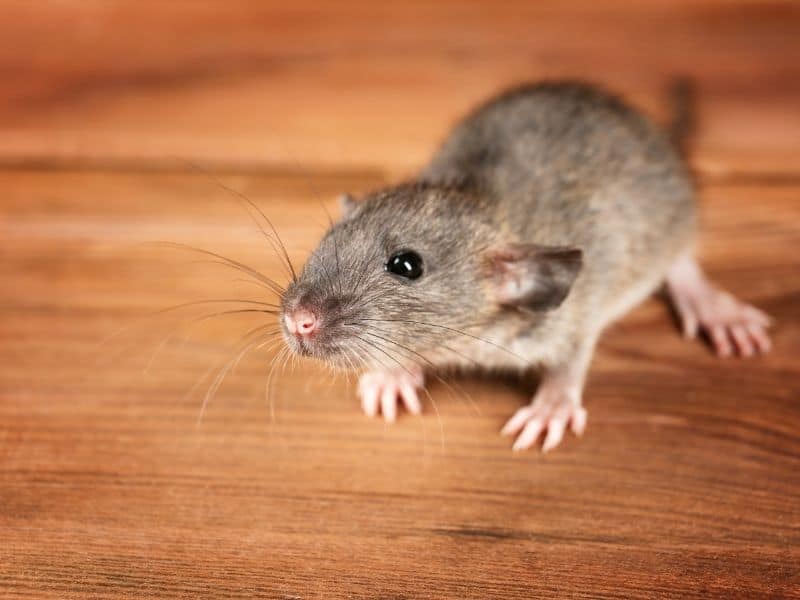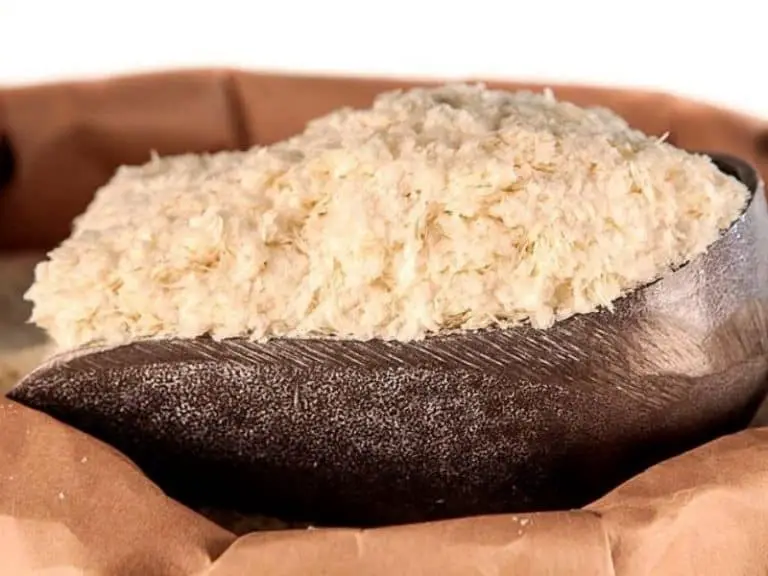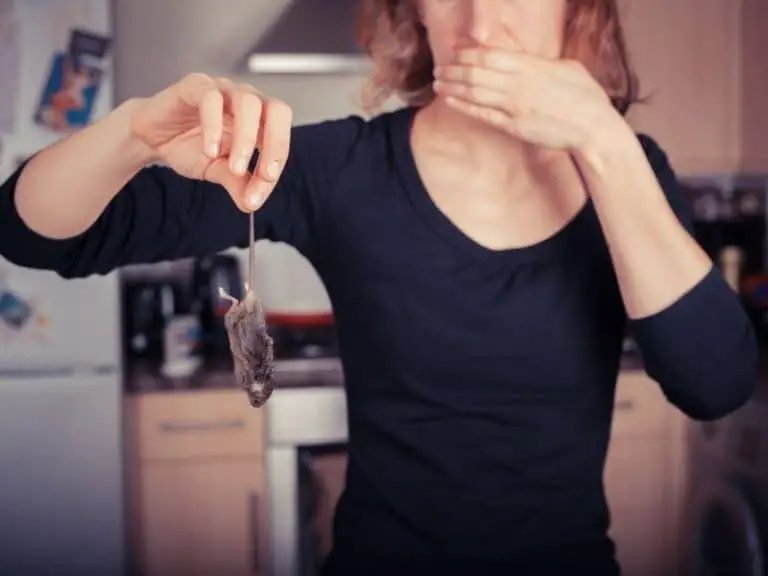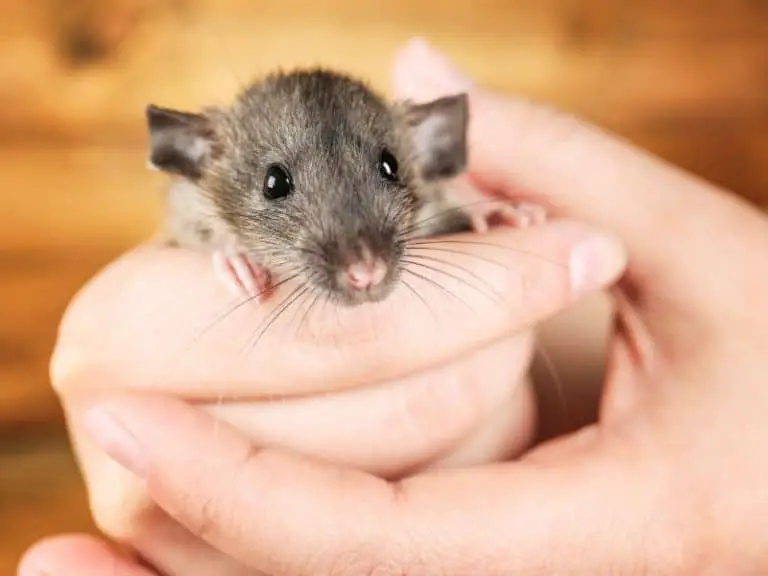How to Humanely Dispose of a Live Mouse
Sometimes killing a mouse may just be too much for some of us. Respect for all living creatures requires that we learn how to dispose of a live mouse without killing it. How do we make sure that a mouse remains alive when we take it out of our home?
The way to humanely dispose of a live mouse without killing it is to set humane mousetraps. Do not choose a glue trap as mice will struggle to break free and injure themselves slowly to death. A nonlethal way to trap mice would be to use live traps and release them back into the wild.
Having a live trap is a solution to disposing of live mice easily. The key to this is how to set them properly, place bait in them without using lethal chemical bait, and send the mice off to a place where they would cause the least harm. This requires some time, but the rewards are great.
How Do You Dispose of a Live Mouse?
Disposing of a live mouse requires several steps, and it is vital to find a way to trap it without causing harm.
We can do this with live traps, which are like little cages that are triggered by a mouse entering the enclosure and tripping a wire to lower the cage. Two words are key here: trap and release.
A live trap first needs to have its trigger readied. Follow manufacturer instructions on how to do this properly.
There are also many sources on the web on how to set up live trap triggers. Once you have the trigger ready and the cage open, you are ready to take the next step: bait.
Place the bait into the cage at the far end on the trigger mechanism in the back. Choose food that would be attractive to mice, such as peanut butter, cookie crumbs, or chocolate.
Since it may be a while before you release a mouse into the wild, you may wish to place more food and water into the cage. This will prevent the mouse from dying.
Like other rodents, mice gather and breed in certain places and set a live trap near a location where you know mice gather and leave to find food and water.
Place them parallel to a wall. This is because mice have poor eyesight and need to feel their way around a house by brushing against the wall. Check the trap every hour.
When your trap is triggered, and the mouse is inside the cage, you may choose to keep the trap somewhere where the mouse can remain warm.
It might be a good idea to leave the trap in a place where radiant heat from the walls if you have a heating system, could help keep the rat warm and cozy. Put a towel over it to calm the mouse.
Because your goal is to keep the mouse alive, keep it well fed and nourished.
Provide it with food and water. It might be wise to choose the same kind of food that you used as bait or pellets you would use to feed pet mice.
Leaving water in the cage where it is possible or convenient is a helpful way to prevent thirst.
The final step is to let the mouse go. Take your trap with you for about half a mile from the house, open the trap, and release the mouse there into the wild.
Hopefully, the mouse will survive in the outdoors on any natural food and water. Take the trap home and clean and disinfect it for further use.
Check my post with the recommendations on the best humane mousetraps.
When Should You Not Use the Trap and Release Method?

We can think of two scenarios where one should not use the trap and release method we just discussed.
The first is when it is not legal to release rodents into the wild, which is possible in some jurisdictions.
The second is when there is a full-blown mouse infestation, where trapping and releasing a mouse at a time is inefficient.
In some jurisdictions, because of the harm rodents can bring, it is not possible to merely release a mouse into the wild. This is true of other rodents, such as rats, raccoons, and skunks.
This is where a professional might come in handy. Turning over a trap with a mouse to them and allowing them to dispose of it in a safe and legal way might help.
The other scenario is when there is a full-blown mouse infestation.
We know how to dispose of a live mouse when we do it one at a time, but we must remember that mice, like other rodents, can breed very quickly. Taking a live trap or two to capture mice and release them may not work if there are a lot of them!
We must remember that, in many cases, the presence of one mouse in a house might signal that there are more of them.
Trapping a mouse is helpful when there are one or two of them, but the key is preventing mice from coming back. We will talk more about this below when we discuss how to prevent mice from entering a home.
Why Should You Dispose of a Live Mouse Without Killing It?
Mice pose an inconvenience to people living in houses. They can damage walls by gnawing through them and leaving holes. They scavenge for food, especially those which are improperly sealed and covered.
Mice can eat anything, but especially grains and seeds. They nest in locations made with found paper and other organic material.
If you are concerned about the harm mice can do to your house, it might be wise to consider why they are in your house in the first place: they need food, water, and shelter.
However, they can get this in the wild as well, where they might survive. Keeping them alive may be a good alternative to keeping them at home.
The simple reason we can advance for disposing of a live mouse without killing it is that it may be the right thing to do for you.
Mice are living creatures just like the rest of us, and they may deserve respect and the right to live. Some of these include ethical and religious reasons. In principle, you may be opposed to killing creatures like them.
We will talk more about how your principles determine your choice of traps and why they do not choose them.
For now, it is helpful to know that while snap traps are humane—they kill mice quickly and painlessly—they might leave a bit of a mess. Perhaps it is more humane to keep them alive and release them where they can thrive.
What Should You Do With Captured Mice?
Once you have your mouse trapped in a live trap, what should you do with it? If you are not prepared to take the mouse far from the house yet, there are two things you should do.
The first is to leave food and water for the mouse in the trap. The second is to calm the mouse down by putting a towel over the cage.
Mice will die if left without food and nourishment for a long time. How do you provide for both? You may want to leave enough food and water in the cage for them.
Some live traps make it possible to place a bottle of water with a “straw” at the end for rodents to drink from. Do this when you can’t release a mouse immediately.
The other measure, whether or not you will release a mouse immediately, is to prevent it from being agitated by placing a towel over the cage.
Mice risk being injured by running around a cage and bumping into its walls. Being humane means causing the least amount of harm and keeping the mouse as calm and comfortable as possible.
Whether it will be a few hours or a couple of days, releasing a live mouse requires that you take it as far as possible from the house.
At least 100 yards from the house is sufficient, as PETA recommends. Other experts recommend at least half a mile. The key is to take it somewhere where it can thrive, as we said.
Why Choose Food Over Chemical Bait?
If you want to know how to dispose of a live mouse, the answer to how to lure them is really simple. Don’t choose chemical bait. First, the point is to keep them alive, not to kill them.
Second, these can cause harm to other creatures, such as pets, that come into contact with them. Third, it is harmful to us humans.
What is good food bait? Traditionally, soft cheese has been good bait for mice. However, the consensus choice of bait, whether for rats or mice, is peanut butter.
Why peanut butter? Mice are naturally attracted to rats and seeds, so any substance made with nuts is something they crave.
Another alternative, if you can afford it, is hazelnut spread. The same reasons as choosing peanut butter for bait apply.
Depending on which one you choose, both peanut butter and hazelnut spread may need an additional lure for mice to enter a trap. This lure is oatmeal. Spread dried oats on top for them to be more attracted.
Another form of bait to try is chocolate. Mice, like the rest of us, need the calories that chocolate can provide.
Other sugary stuff such as marshmallows and gumdrops provide instant nourishment for mice. Because rodents also need protein, beef jerky is also recommended.
Either way, live traps should have the bait at the back!
Why Should You Avoid Glue or Snap Traps?
Live traps are the default mode for disposing of live mice humanely.
While glue traps or snap traps offer a quick way to capture mice, especially when you need to leave them unattended, they are not a good idea when you want to treat mice with care and respect, even if they are a nuisance to your home.
Glue traps have their advantages and disadvantages. It is easy to dispose of the mouse and trap.
However, they are the most inhumane way of disposing of mice. The reason is that mice can get themselves entangled as they struggle to get free, thus putting them in pain. Potentially, they can suffocate and die.
In theory, Snap traps are the most humane way to kill mice and other rodents other than keeping them alive in live traps.
Unlike glue traps, which guarantee that mice will die a long and possibly gruesome death, snap traps quickly kill a mouse by breaking its neck. The disadvantage here is that, of course, you want the mouse to be alive.
This leaves us with live traps. If properly monitored and used, they are the most humane way possible to trap mice for release into the wild.
How Do You Dispose of Live Mice in the Winter?

Like other rodents, Mice are attracted to houses in the winter because of the food and shelter they provide, especially if they need to find a place to nest and breed.
When you find yourself with a minor mouse problem, the best thing to do is to trap them using live traps as usual. The problem lies with how to actually get them out.
Releasing them into the wild is a great idea in theory, but in winter, it may be much more difficult.
Although mice can survive in the wild, they need warmth and shelter, and food sources are hard to find. Choosing a place to release them is important. Consider releasing them in locations where they might find shelter from the cold.
A good idea is to provide them with food to initially survive in the wild. And if you’ve managed to capture more than one mouse, it’s best to release them together than one at a time.
Their chances of survival are better if they stick together. If they do not survive for whatever reason, it is at least more natural than actually killing them off.
How Do You Prevent Mice From Returning to Your Home?
If you do not want to worry about having live mice to dispose of, the key is to prevent them from coming into your house in the first place.
Here are some tips we have found useful in preventing mice (and other rodents) from returning to or even entering your home in the first place.
- Seal off cracks and holes on the outside of the house with weatherproof sealant. Mice are agile enough to enter small holes or cracks.
- Keep your counters, floors, and tables free of crumbs or other food scraps. Mice are scavengers and can eat anything that lies around the house.
- Keep pet food and other food items in chew-proof containers, such as solid plastic containers with lids. Pet food packaging is especially vulnerable because it is made of cardboard or paper, which is good nesting material for mice.
- Store anything that can provide shelter for mice, such as barbeque grills, outdoor furniture, and piles of wood, far away from buildings.
- Take care of your garden by trimming hedges and trees and picking up any fruits and vegetables left on the ground. These ensure that mice do not have any place to hide or food to eat.
- Turn compost pits once new food scraps are placed to prevent them from being ready food for mice and other rodents.
- Keep waste bins closed and secured, especially bins provided for composting.
When Should You Call a Professional?
Most of what we recommend in this post are things you could do yourself, such as entrapping live mice using live traps and bait. These are recommended if you are dealing with a few mice at a time.
However, if you sense that there is an infestation because mice breed quickly, it might be time to call in a professional pest control expert.
If the expert you choose to call is familiar with nonlethal and humane methods of disposing of live mice, they might be a good resource for you.
They might be familiar with the best ways to use and optimize live traps to capture mice without killing them. The key word is “might.” They may prefer to go for a more lethal approach.
Another case where you will need professional help is when you are not confident that the mice you release cannot survive in the wild.
Veterinarians or those working in animal shelters have access to humane ways of putting mice to sleep. This is the last resort, but we prefer this to leave them to fend for themselves in the wild.
Remember, when you want to know how to dispose of a live mouse, the things to remember are to trap it and release it. Use live traps and bait them properly.
Watch them often and do everything in your power to release them promptly. You will be sure to find that your mouse problem is solved in a humane way.
Further Questions
How do you dispose of mice in a snap trap?
Disinfect the mouse and trap, use gloves to remove the carcass, and place it in a sealed bag. Place this bag in a sealed bag. Throw it away along with your gloves. To release a mouse from a glue trap, take it to a far place, use vegetable oil to loosen the glue, and ensure that the mouse runs off.
Photo credit: ©canva.com/leonidyastremskiy
Medical Disclaimer: TheHomePestControl is a digital publisher and does not offer personal health or medical advice. The contents of this website are not intended to substitute for professional medical advice, diagnosis, or treatment.
Affiliate Disclaimer: As an Amazon Associate, I earn from qualifying purchases made on our website. If you make a purchase through links from this website, I may earn a commission at no additional cost to you.






